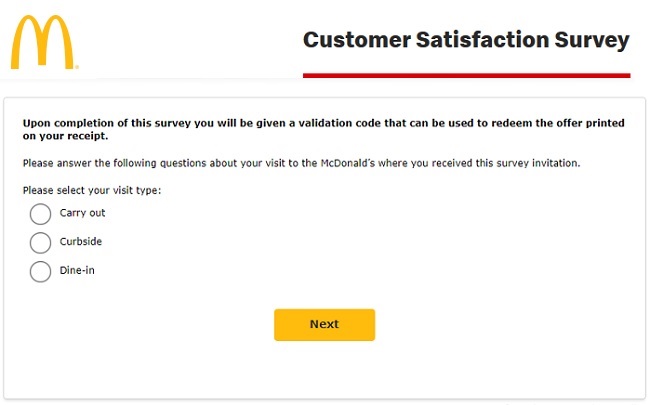How To Analyze Data From A Survey
It’s way too easy to go through your survey responses for half an hour, pick the most interesting trend, and finish up. However, refusing to thoroughly analyze your survey data jeopardizes the entire research work.

In this article, we will talk about the importance of conducting detailed survey analyses and provide you with the techniques and tools to do so effectively.
The Importance Of Survey Analysis
Regardless of how big or small your survey is, once you delve deeper into it, you will discover plenty of extra data in the responses.
A cursory examination of your qualitative and quantitative results will not do justice to your research study.
A proper survey analysis can blur the line between a useless data set and a useful business input.
The simplest net promoter score (NPS) surveys, for instance, can show you whether your clients are satisfied or disappointed by your service.
However, subdividing your NPS information by sector, organization size, or maybe even job role is far more insightful.
It can reveal which kinds of clients are the most dissatisfied and reveal certain explanations as to why they are feeling this way.
Survey analysis is extremely essential beyond the corporate world as well. The reliability and reproducibility of scholarly research findings are pivotal.
Unsubstantiated survey data are devoid of detail and meaning. As a result, they are more challenging to reproduce across different communities and groups of people.
Your survey data will be more reliable if they are thorough and clustered.
Methodologies Of Survey Analysis
There are numerous methods for analyzing survey data. The approach you need to use is determined by the kind of information you hold.
Unstructured data is produced by qualitative survey results, which are typically presented in the form of open-text answers.
Quantitative data can be expressed numerically or classed in a certain way to generate structured statistical information.
How To Analyze Your Survey Data

Begin your analysis of the data by looking over the quantitative information you see. In comparison to qualitative data, quantitative data requires less time to assess.
Because it is already structured, such data can provide you with information such as which option (e.g., A, B, C, or D) of a question’s answers in the survey was the one people selected the most.
Several survey portals include survey advanced analytics that can be used to obtain a new high-level view of your results.
If you are employing a survey tool that does not have its own survey analytics feature, you can export the survey’s results and conduct the analysis on another platform.
Begin subdividing the data once you have completed a high-level analysis of your quantitative information. The majority of data packets are rooted in key demographics, firmographics, or characteristic data.
This crucial step is frequently overlooked. However, it has the potential to generate a few of the most important observations and results.
Four major measurement metrics can be used to represent both quantitative and qualitative information: the interval, the ratio, the ordinal, and the nominal/categorical.
Interval
Interval metrics display the order of values as well as the distinction between them. The value difference is stable across the spectrum. On an interval scale, you can also come across negative numbers.
This data is not required to include a true zero point. Examples of such data are number-based grading, temperature degrees in Celsius or Fahrenheit, and IQ test results (You might also want to check out What Is A Quiz?).
Ratio Data
Ratio data is displayed on a scale that also displays the sequence and variation between scores. On a ratio scale, however, there must be a zero point, but it doesn’t have negative values because there is that specified zero point.
Ordinal Scale
An ordinal scale generates organized qualitative information. Different values are labeled, and they are arranged in a specific sequence. An instance of such a scale is a five-point Likert scale.
Nominal/Categorical Data
Unlike ordinal data, nominal/categorical data has no set sequence or continuous value between its labels.
Nominal data is produced by multiple-choice questions asking, for example, the participants to select their favorite film genre.
Guidelines For An Effective Survey Analysis
Irrespective of the type of data you have collected – quantitative, qualitative, or both – there are four key practices to remember:
Take Note Of The Number Of Respondents.
The size of your sample can have a significant effect on the reliability of your survey results (Also check out What Are Sample Surveys?).
It determines whether you should make assertions based on the data you have collected and how broadly applicable the findings of your survey seem to be.
1000 responses are way more reliable and can lead to a more objective finding than 100 would. Large sample sizes (Also check out What Does n Mean In Statistics?) are typically required to demonstrate statistically significant results.
However, such big sample sizes are not required for gathering qualitative, empirical information. On the contrary, what is crucial is to get respondents suitable for the purposes of the survey.
Complete A Data Segmentation
As previously stated, subdividing your data frequently presents valuable insights regarding your survey results. A high-level result can be easily generalized across a demographic. However, this does not disclose the full story.
If, for example, your business has a total NPS of 35 but the numbers are different across the various subgroups, then that means that some customers are not as satisfied as the rest. That could be the case with in-store and online customers.
Compare The Data
Always compare the latest data you have from a survey with those of previous surveys you’ve conducted as only comparative data can demonstrate how important and useful the findings are.
Now that you have analyzed the data, it’s time to create an insightful and meaningful report or presentation to share the results with your coworkers, employees, and even your customers.
The Bottom Line
Take advantage of that gold mine of data you’ve collected with your survey and analyze it. With our tips on how to do it, you can create great reports and gain valuable insight. Best of luck with your analysis!
- What Polls Reveal About Sleeping Together Early and Long-Term Relationship Success - July 7, 2025
- How to Design a Hard Harry Potter Trivia Challenge - October 4, 2023
- How to Design a Dear Peachie Makeup Preference Poll - October 4, 2023










